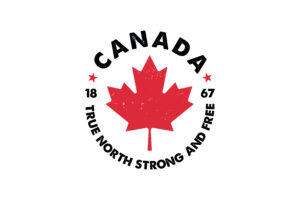Do you remember the patchwork of evolving state regulations when GMOs were the center of attention several years ago? The regulation of PFAS is heading the same way. From a federal voluntary market phase-out to robust state regulations, a patchwork of restrictions and bans against PFAS and other chemicals in food packaging and water are causing a complexity of compliance for the food industry that has all the makings of an impossible situation for companies that make products which are sold in multiple states
Twenty states have adopted policies regulating PFAS in packaging and/or water, with even more having introduced PFAS-focused standards or regulations. In total, 194 state policies have been adopted or introduced related to the phase out, with transparency or other accountability specifically focused on PFAS in packaging or water. That number rockets to more than 300 when all anti-PFAS policies passed or introduced – by more than 2/3 of the 50 states – are accounted for.
While FDA recently announced that grease-proofing substances containing PFAS are no longer being sold for food contact use, there is not a federal regulation against the use, rather the elimination of PFAS from “authorized food contact uses” was a voluntary market phase-out. Thus, states are enacting more restrictive and robust laws to keep PFAS out of their citizens’ food.
The vast array of state policies not only makes it difficult for food companies selling across state lines, but the number of adopted or pending policies in a single state can make even intrastate sales complex, requiring that food companies know of and heed all adopted regulation, while keeping an ear to the ground for pending policies. Interestingly, it’s not California that has introduced or enacted the most policies (though it has eight adopted and two pending of its own), rather Minnesota comes in on top with a total of 27 separate policies – though only three have been adopted, with the others having been introduced.
A significant share of the anti-PFAS policies focus specifically on drinking water, thus do not require food facilities to take action. However, the water standards and regulations do impact the food industry, as food establishments are required by law to ensure the water they use is safe and compliant with GMP standards. But it is the PFAS packaging policies of which the food industry needs to be most aware, as these have the most direct impact, particularly on interstate commerce. Currently 12 states have adopted 17 policies related to PFAS in food packaging with most of the policies focused on a phased-out use of PFAS in the packaging.
To make this even more complex, many of the packaging regulations include other toxins in their language as well – from heavy metals, bisphenols, lead and phthalates to “toxic chemicals general.” A few examples of enacted state regulations include:
- California, Connecticut, Hawaii, Maine, Minnesota, New York, Oregon, Rhode Island, Vermont and Washington have passed regulations that ban the use of PFAS chemicals in food packaging, while Colorado’s and Maryland’s regulations “restrict” the use.
- Vermont’s regulations also require the state department to conduct a study on PFAS in food packaging and “allow the department of health to adopt rules” banning bisphenols in food packaging, while Washington requires its department of ecology to conduct an assessment on safer alternatives.
- Oregon also prohibits food vendors from using polystyrene foam containers for prepared food.
- Meanwhile, there are numerous similar policies, standards, or regulations pending in states across the U.S.
While reducing, and eliminating, chemical exposure in foods is a truly worthy endeavor, it is not a simple or rapid initiative. While the reduction of chemicals in food packaging is a good start, PFAS and other chemicals in the soil and groundwater can be taken up by plants providing an even more direct route to food sources. Because of this, the industry will continue to see new regulation – from both federal and state governments – focused on chemicals and heavy metals in food.
To cite a few tired but true clichés: Keeping an eye on new regulation and an ear to the ground for introduced initiatives will help keep your business ahead of the curve and on the right side of the law – wherever it may originate. For more on industry and regulatory actions related to PFAS exposure in food, see TAG’s Insights articles on PFAS and chemical reduction. And give TAG a call if we can assist in your chemical risk management or other food safety practices.





